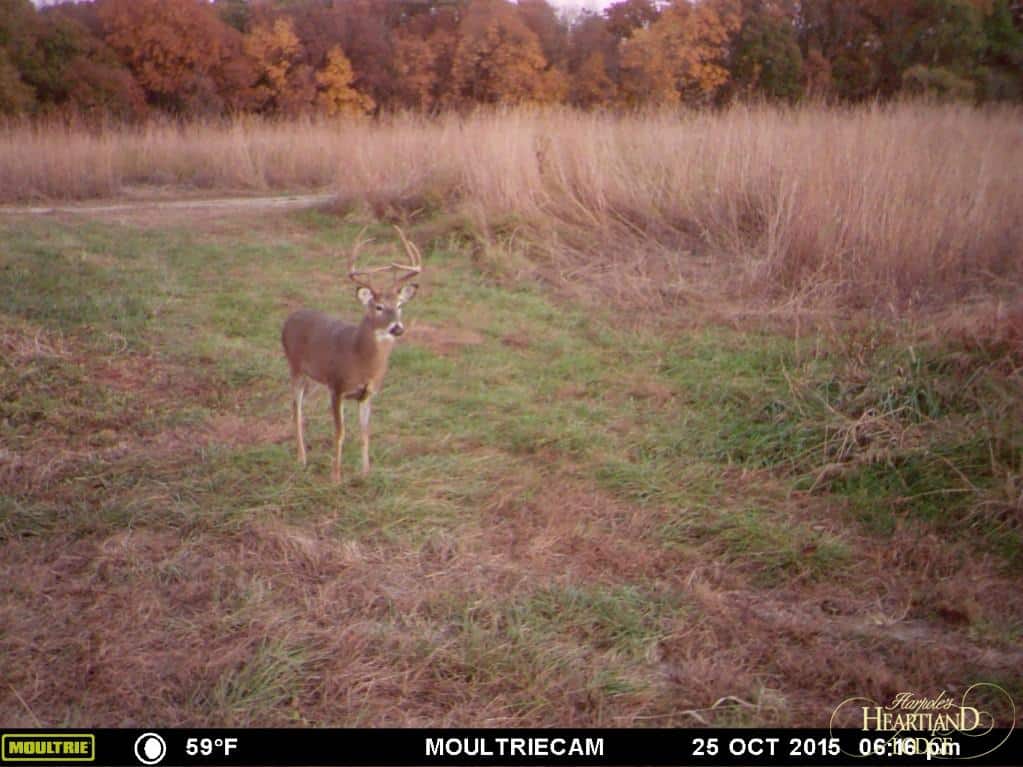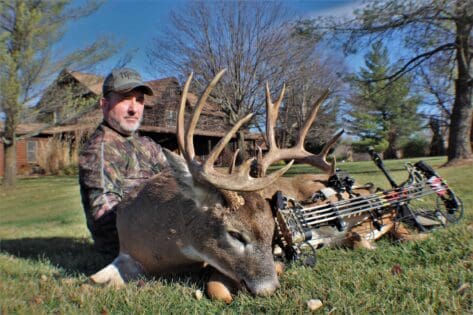Trail Camera Experiment
There are so many advantages to using trail cameras that I believe they far outweigh not using them. Especially from a trophy hunters point of view, they’re invaluable for getting dialed in on your target buck. But with the good comes the bad, and to illustrate some of the negative effects trail cameras have on deer, I conducted an experiment to see what type of reaction deer would have to a newly set trail camera at a food source.
Placing cameras along the edges of food sources by placing them on a standard t-post or other permanent structures such as a 4×4 post is common practice. So I erected a standard t-post on the edge of a long, narrow turnip food plot. I then placed an “observation trail camera” approximately 12 feet off the ground angling toward the t-post, and set the camera on video. I took all the normal scent precautions I use when setting out all cameras and let the camera sit for two weeks before swapping the SD card. The results were eye opening.
The first week the camera was out; every single deer that walked past the camera noticed the camera. Most would pause for seconds at a time and examine the foreign object. Does, especially with yearling fawns, acted extremely cautious around the camera, circling downwind of the camera multiple times on some occasions, before finally continuing past the camera. On one occasion, a 2 ½ year old buck walked up to the camera in the evening just before it got dark, smelled the camera then walked directly back into the woods. The same buck then reentered the food plot after dark, again walking cautiously around the camera. Surprisingly in two weeks, not a single deer that was on the trail camera video looked up at the observation camera that was approximately 12 feet high.
The video example shows the reaction that a young buck has to the camera 4 days after it was set out. What puzzles me in this video though is the fact that the other buck seems to stay somewhat calm around the camera, even after the younger buck takes off, the older buck continues foraging. Is it possible that the 1 ½ year old buck has already had a bad experience with trail cameras in the past? Or is it just the personality of that particular buck to be extremely cautious around unnatural objects in their habitat? After a farmer erects a new fence around a corn field using t-post, would that buck react the same way, even though the farmer has left his scent all over the t-post and the wire? Or is it the mere sight of a plastic, cube shaped object of the camera that the young buck had never seen before make him nervous? This short video clip lends more questions than answers…
I left the camera out on the t-post for the remainder of the season. In late December, I put the observation camera back over the existing t-post camera to see how the deer would react to a camera that’s been left in the same location for an extended period of time. I checked the SD card 7 days later, hoping for the same young buck to reappear.
Unfortunately, he did not, but I have high hopes that as spooky as the young buck acted, he was wise enough to survive the season. However, to my surprise, after watching the video from the second go around, the far majority of the deer walked past the camera without flinching. A mature doe was the only one to reinvestigate the camera. She walked up to it cautiously, smelled it and then continued on foraging. Again not a single deer on video looked at the observation trail camera.
The two points I took away from this experiment are 1; setting a camera out anywhere is probably going to be noticed by deer, especially if you leave it in plain sight, at about head level there going to know that you intruded there “space”. It’s like living in a small town and one day, someone moves in and builds a house on the outskirts, the first few times you drive you’re going to be inspecting the new house, new owners, ext. Were curious, sometimes nosy animals, just like deer. People sometimes react timidly to new neighbors, for numerous reasons but one reason, instinctively being for there own safety and safety of their family. I believe deer react the same way to new objects in their environment, based on their past experiences and run ins that they have had both positive and negative outcomes.
The second aspect and most importantly is the fact that not a single deer acted as if it noticed the observation camera, yet almost every single one noticed the camera on the ground. This in turn has me cautiously trying to avoid placing cameras that close to the ground. After this experiment, I started to set up cameras at least 6-7 feet above the ground where possible, and it definitely reduced the number of pictures of deer acting as if they knew the camera was there. I believe you can relate trail cameras to ground blinds. The first few weeks a ground blind is out especially around a food source, deer are going to be very cautious around them but if the ground blind is left in the same spot over an extended period of time, deer will walk right past it like it’s part of their environment and become less and less wary of it. 
All in all, if you plan on placing trail cameras over food sources, it’s probably a good idea to get them out as early as possible so deer can get used to them. Or if you’re already half way in the season, try to place them above a deer’s eye line to help reduce alerting deer of your presence. Obviously in a lot of locations it’s not going to work to place a camera that high, so try to “hide” them the best you can. In the trail camera picture above, I was able to place the camera at about 7 feet and angle it downward. Throughout the season, there was only a handful of deer that seemed to notice it being there, this nice up and comer had no clue.
Whitetail Guide
-Zach Jumps
Last Updated: January 23rd, 2016




